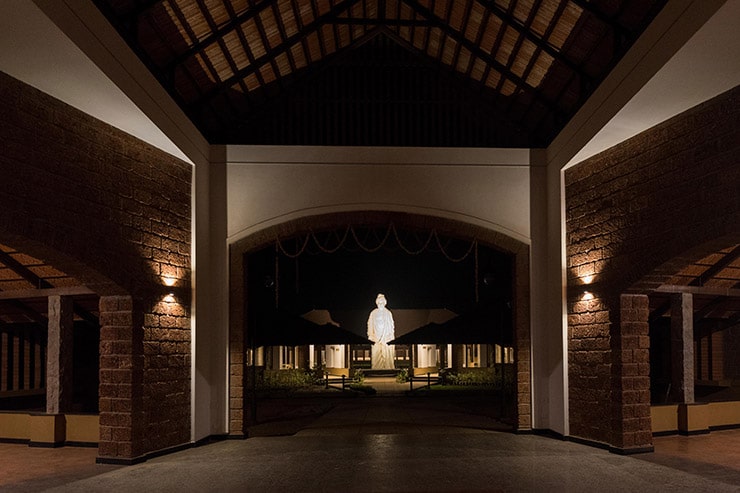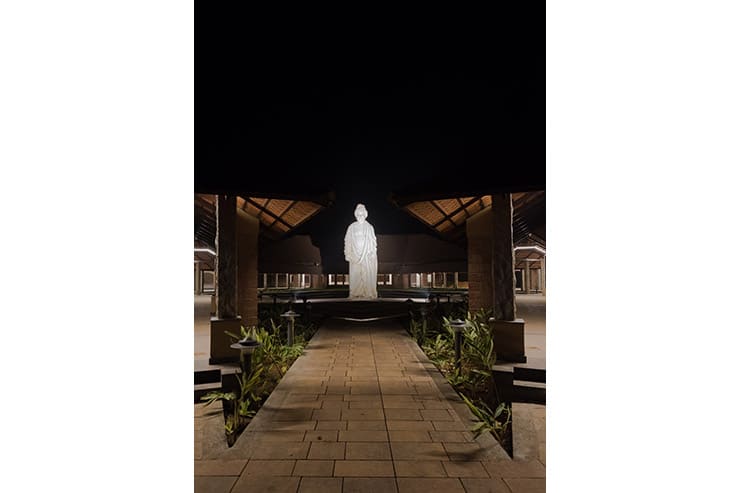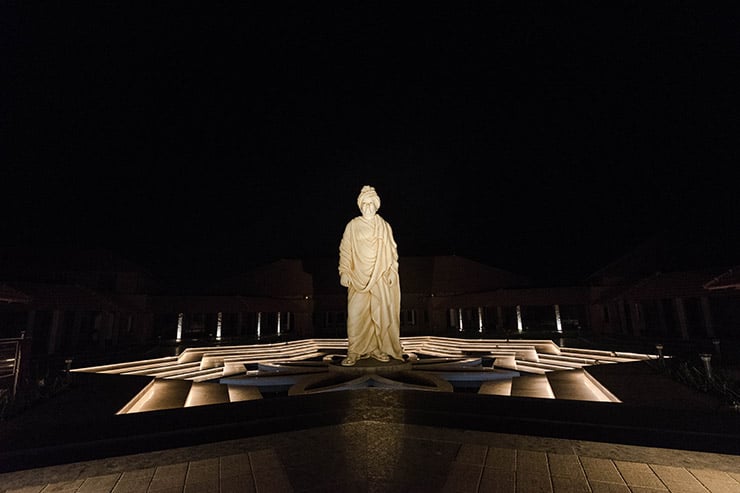This website uses cookies so that we can provide you with the best user experience possible. Cookie information is stored in your browser and performs functions such as recognising you when you return to our website and helping our team to understand which sections of the website you find most interesting and useful.
Swami Vivekananda Statue, India
ProjectSwami Vivekananda StatueLocationKarnataka, IndiaLighting DesignLighting Research & Design, IndiaArchitectSajith & Vivek Architects, IndiaAdditional DesignStudioplus Consultancy & Marketing, IndiaClientSarvah Kshema Hospital & Research FoundationLighting SuppliersStudioplus
Sarvah Kshema Hospital and Research Foundation (SHRF) located near Saligrama in the state of Karnataka in India, is an advanced centre for yoga, rehabilitation and research where yoga and spirituality are being taught with scientific evidence with the concept of return to nature. Its core principles are based on the teachings of Swami Vivekananda, a monk who introduced ancient Indian philosophies of Hinduism to the Western world and raised interfaith awareness through humanistic and rational teachings. Swami Vivekananda’s deep spiritual insight, fervid eloquence, brilliant conversation, broad human sympathy, colourful personality, and handsome figure made an irresistible appeal to the many people who came into contact with him. So when a 35-ft. statue of Swami Vivekananda was unveiled on the premises of SHRF, it became a symbolic representative of both his teachings and SHRF. The statue required carefully thought through lighting as another symbolic representative of his teachings.
Tough site conditions required six critical factors to consider while lighting this statue. First, the lighting technique had to be combined with the structural form and materials of the statue. This required careful stratification according to the different luminaire output, beam angles and positions for properly expressing the charm and artistic beauty of the statue, such as illuminating of the different folds of the fabric or adding a layer of brilliance especially to the face. Second, a large statue such as this invariably required more than one luminaire to reveal different parts of the object, but care had to be taken not to cancel out the shadows from one another. The impact of a carefully illuminated statue is often defined by the creative use of shadows; too much brightness tends to bleach out the statue’s details. Third, the central location of the statue was such that it became the centre of attraction for all visitors. This required careful selection and positioning of luminaires so as to avoid glare and unnecessary interference with other activities within the SHRF premises as well as unnecessary shadows on the surrounding buildings. Fourth, side lighting had to avoided as it leads to the bad visual effects that make the sculpture lose its three-dimensionality. If it cannot be avoided, then generally side lighting in angles greater than 50 degrees and less than 60 degrees is most suitable. Fifth, avoiding spill light around and behind the statue. Use of narrow-beam equipment, shields, baffles and lighting from high positions normally helps to reduce this. Sixth, luminaires had to be seamlessly camouflaged with the architectural design of surrounding buildings and landscape.
Ten different luminaire locations all around the statue were identified using simulation software so as to meet all the above six critical factors for lighting. 120W LED floodlights with appropriate glare control accessories for were selected considering their variety of beam angles and tight budget constraints. Warm colour temperature of 3000K was selected to match the warm beige-tone of the statue. Client and visitors have only expressed awe of their experiential journey towards and around the statue, especially during the night-time. As a result of the preservation matters, there was no way adding extra wiring for lighting management. The existing circuit (which could not dim LEDs) should be exploited. To overcome this difficulty, a potentiometer was placed on each light fixture to adjust its intensity.
Colour temperature, CRI and quality of light output in general were considered of high importance and along with the difficulties in implementing the lighting, the use of light fixtures focused on state of the art technology.
To simplify the functional part of the building’s lighting management, as the intensities are fixed and the power supplies use 1-10V dimming method, all the fixtures are controlled by a time switch.




